Embarking on an organic growing journey entails thoughtful consideration of the fertilizers that will nourish your plants, soil, and nurture your garden’s ecosystem. In this guide, we explore the advantages of Rooted Leaf AgriTech carbon-based fertilizers over salt-based nutrients, shedding light on why they offer a superior choice for cultivating a thriving organic garden.
The OLD Organic
Salt-based nutrients, while commonly used in conventional agriculture, come with their fair share of drawbacks in organic growing. These fertilizers are typically synthetic in nature, formulated with soluble mineral salts like potassium nitrate, ammonium nitrate, and magnesium sulfate. While they provide a quick nutrient boost to plants that can be measured very precisely, salt-based nutrients can disrupt pH, soil microbial activity, accumulate in the soil over time and pose a risk of developing nutrient imbalances, lockout, etc.
Salt-based nutrients can be used in organic grows but will require consistent inoculations of biology, as salts increase the osmotic pressure of water in the soil, which in turn draws water out of nearby cells of microbes and roots. When using salt-based nutrients, the grower is feeding the plants more than they are feeding the soil, which can allow for precisement dosing and manipulation in the plants’ life cycle that can be seen as “playing God”. While this allows for maximum controllability in regards to what the plant is receiving, it also means when plant health is in question it needs to be addressed and fixed by the grower rather quickly to avoid compounding issues from occurring.
The NEW Organic
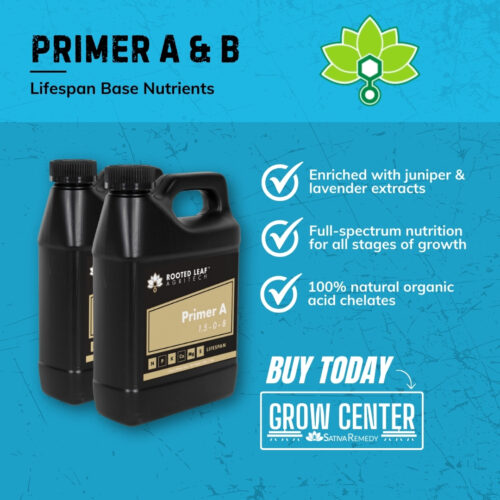
Carbon-based nutrient products like Rooted Leaf AgriTech are relatively new options in modern agriculture that not only make growing in an organic fashion easier, but feed soil microbes, improve soil structure, and provide 100% bioavailable nutrition for plants, including a tremendous amount of carbon.
When growing organically, the emphasis is on feeding the soil and soil microbiology, which in turn feed the plant. Rooted Leaf’s line of carbon-based nutrients are made from fermented plants rich in prebiotic sugars, enzymes, minerals, amino acids, organic acids, and carbon, which help feed soil microbes as well as fast-growing plants. This promotes a symbiotic relationship found in “living soils”, in which microbes in the soil break down organic matter and amendments, feeding the plants just what they need while the plants feed the microbes simple sugars to continue cycling nutrients. When plants are fed fermented plant matter high in organic compounds like amino acids they save tremendous amounts of energy (upwards of 25% total energy expenditure) they would otherwise spend converting ions/reducing nutrients like nitrate nitrogen into usable forms of nitrogen for the plant.
On top of these benefits, Rooted Leaf products are high in bioavailable carbon, which is the building block of all life and the macronutrient that constitutes close to 80% of the makeup of trichomes. The manner in which the nutrients in Rooted Leaf’s product line are chelated/broken down and attached to carbon in fulvic bonds and to organic acids make them more stable, less reactive when mixed together, and reduces the need to pH your nutrient solution when growing in an organic manner.
Rooted Leaf - Primer A & B

Using Rooted Leaf’s product line is straightforward and a bit more forgiving than traditional salt-based nutrient lines. The company has several feeding charts that give guidance on how much of each product to mix into solution depending on what stage/week of growth you are on, which can be found on their website.
The order the products are listed on the feed chart is the recommended order to mix them when preparing a feeding solution, but unlike salt-based nutrients where mixing nutrients in the wrong order can result in precipitation and fall-out of nutrients in solution, Rooted Leaf’s products can be mixed into solution in any order without worrying about precipitation.
To Get Started:

Two of the company’s base nutrient solutions, Primer A & Primer B, are meant to be fed for the lifespan of the plant, from vegetative growth through flowering and are designed to always be used in conjunction with one another. Following the medium strength feed chart, plants that are in the first week fo vegetative growth should be fed somewhere around 4mL of Primer A and 4mL of Primer B per gallon of water.
Making Nutrient Solution (half gallon)
In this demonstration, we prepared a ½ gallon of nutrient solution to be watered in and therefore measured out roughly 2mL of Primer A and 2mL of Primer B for a half gallon of water.

Using a dedicated pipette, we measure approximately 2mLs of Primer A, which has a blueish tint, and squirt it into our half gallon of water.

We then repeat the process with Primer B, which has a red tint.
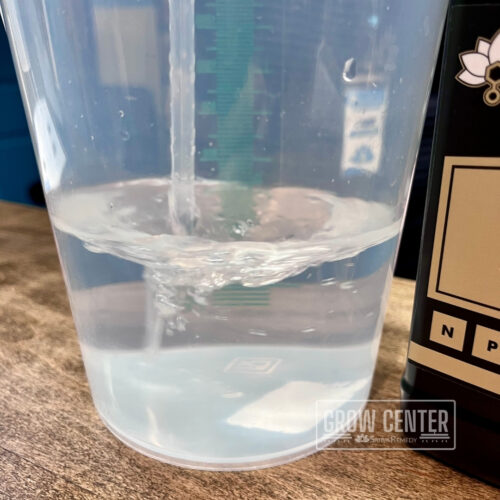
Gently stir before mixing in other nutrients or watering the solution into your soil/medium

Unlike nearly all salt-based fertilizers, you don’t need to worry about the pH of your nutrient solution when using Rooted Leaf products in an organic garden unless an issue is present. This is because these ferments are pH stable and bioavailable to the plant and soil microbiology, which will help regulate the pH at the rhizosphere (root zone).
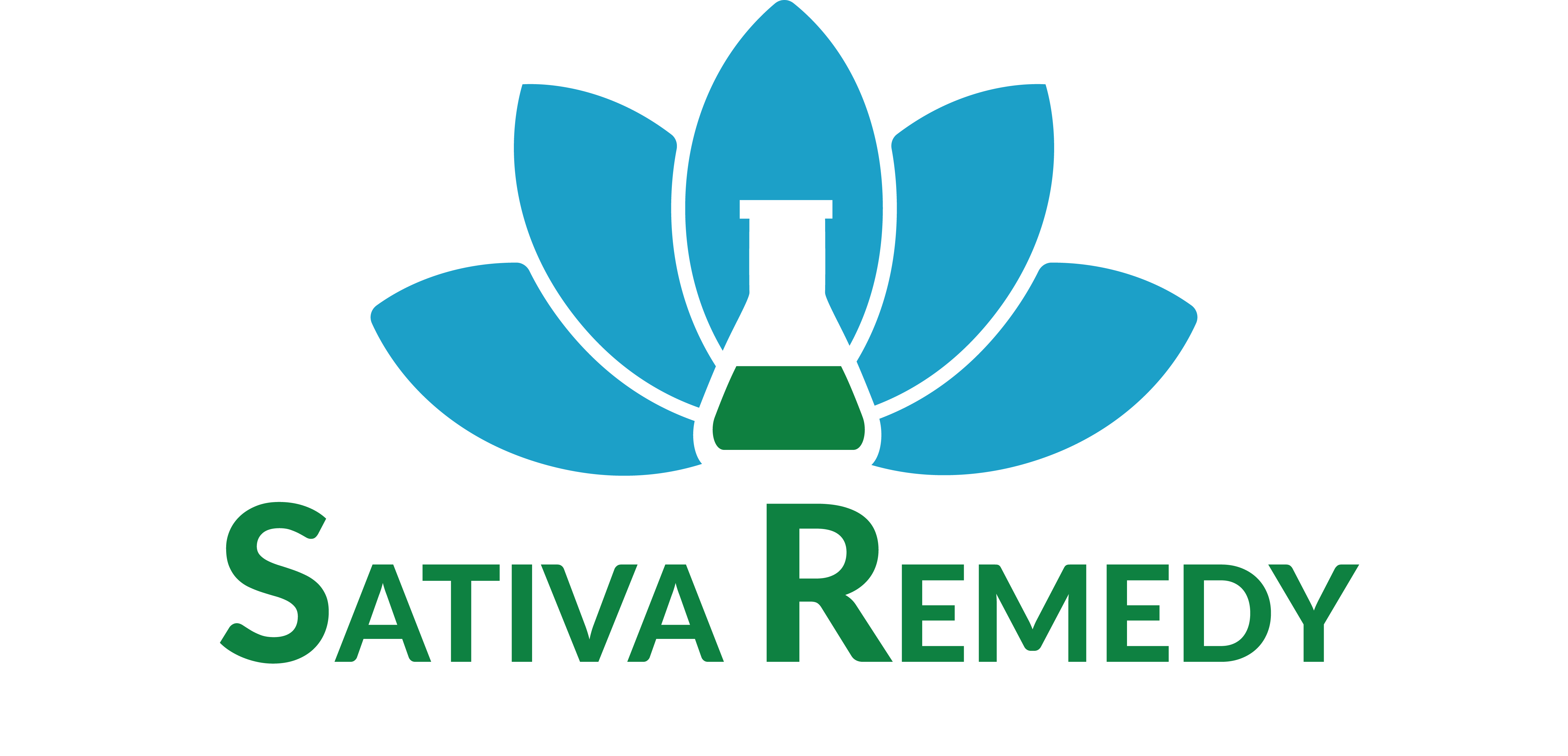
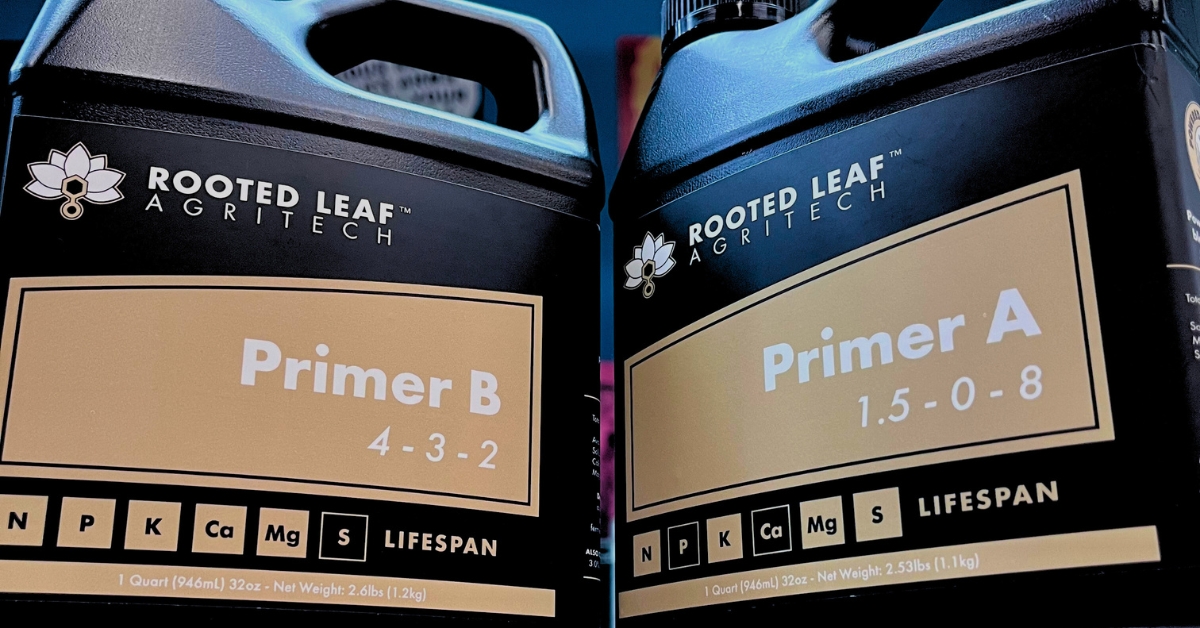
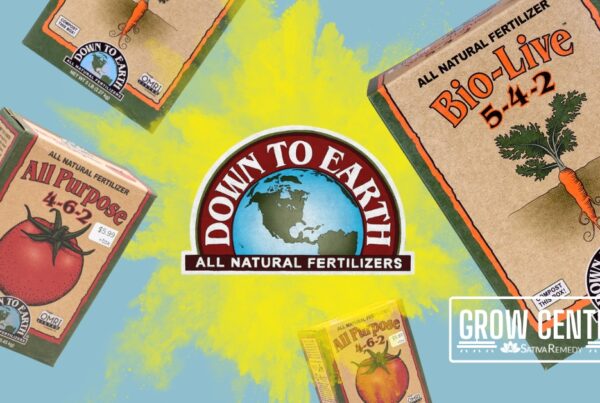
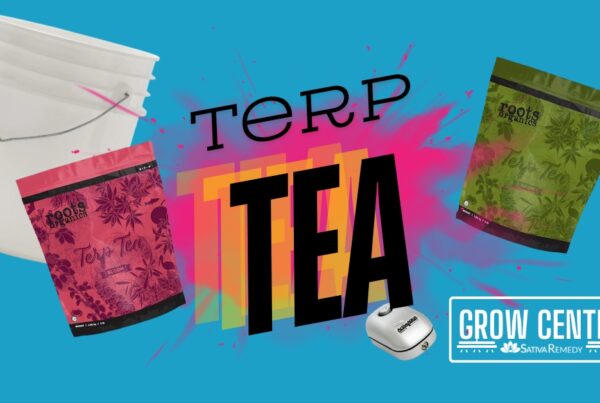

Recent Comments